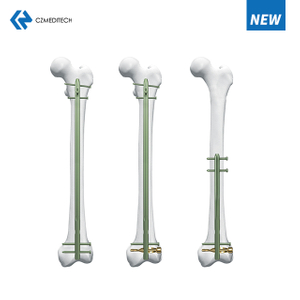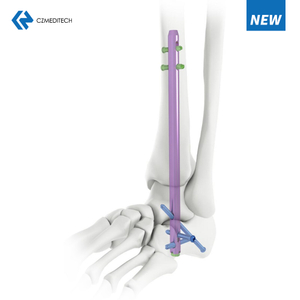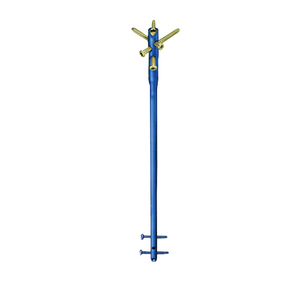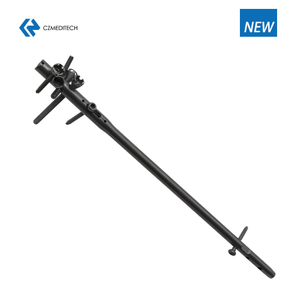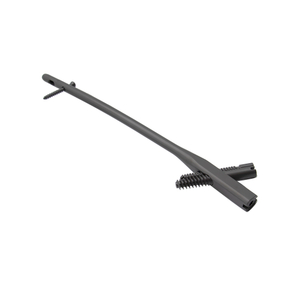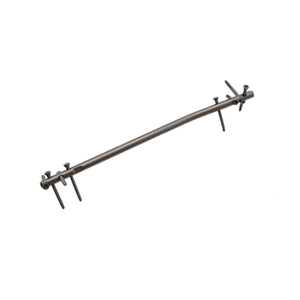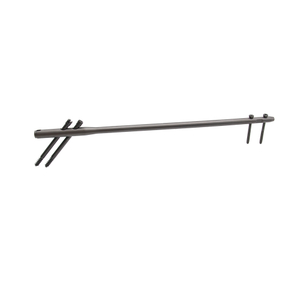Titanium Elastic Nail: A Revolutionary Orthopedic Implant
Orthopedic surgeries have evolved significantly over the past few decades. With the advancement in medical technology and engineering, orthopedic implants have become an integral part of modern-day orthopedics. One such implant that has gained popularity over the years is the Titanium Elastic Nail (TEN). In this article, we will delve deeper into the concept of the TEN, its design, benefits, and drawbacks, and its applications in orthopedic surgeries.
What is Titanium Elastic Nail (TEN)?
Titanium Elastic Nail, also known as Flexible Intramedullary Nailing, is a type of orthopedic implant that is used to stabilize and align fractures in long bones, mainly in the femur and tibia. The TEN is a long and slender rod, usually 2-3mm in diameter, made of titanium, which is inserted into the intramedullary canal of the fractured bone. The nail is flexible and elastic, which allows it to bend and deform without breaking, making it an ideal implant for children and young adults with growing bones.
Design of Titanium Elastic Nail (TEN)
The design of the Titanium Elastic Nail (TEN) is simple yet effective. It consists of two nails, a proximal nail, and a distal nail, connected by a flexible bridge. The nails are inserted into the intramedullary canal of the fractured bone through small incisions made in the skin. The flexible bridge allows the nails to move independently, adapting to the natural curvature of the bone during growth.
Benefits of Using Titanium Elastic Nail (TEN)
Titanium Elastic Nail (TEN) has several advantages over traditional orthopedic implants. Some of the benefits include:
1. Minimally Invasive
TEN is a minimally invasive surgery that involves small incisions in the skin. This reduces the risk of infection and accelerates the healing process.
2. Rapid Healing
TEN helps in rapid healing of the fractured bone. The flexible nature of the nail allows it to move with the bone, stimulating the growth of new bone tissue.
3. Reduced Pain
TEN is known to reduce pain and discomfort in patients. Since the nail is inserted into the intramedullary canal, it does not interfere with the surrounding muscles and tissues, reducing the chances of pain and inflammation.
4. Early Weight Bearing
TEN allows patients to bear weight on the fractured limb much earlier than traditional orthopedic implants. This helps in early mobilization and faster recovery.
5. Low Complication Rate
TEN has a lower complication rate compared to traditional orthopedic implants. The risk of infection, implant failure, and malalignment is significantly reduced with the use of TEN.
Drawbacks of Using Titanium Elastic Nail (TEN)
Like any other medical procedure, the use of Titanium Elastic Nail (TEN) also has some drawbacks. Some of the drawbacks include:
1. Limited Applications
TEN is primarily used for fractures in the femur and tibia bones. Its applications in other bones are limited.
2. Technical Difficulties
Inserting the nail into the intramedullary canal requires a high degree of technical skill and precision. Any deviation from the correct technique can lead to implant failure.
3. Implant Migration
There have been reported cases of implant migration in some patients. This can be due to several factors, such as incorrect nail size or inadequate fixation of the nail.
Applications of Titanium Elastic Nail (TEN)
Titanium Elastic Nail (TEN) has a wide range of applications in orthopedic surgeries. Some of the common applications include:
1. Pediatric Fractures
TEN is extensively used in children with long bone fractures. The flexible nature of the nail allows it to accommodate the growth of the bone, reducing the need for repeat surgeries.
2. Trauma Surgery
TEN is a useful implant in trauma surgery. It provides excellent stability and allows for early weight-bearing, facilitating faster recovery.
3. Correction of Bone Deformities
TEN can be used to correct bone deformities, such as bowing of the legs or curvature of the spine.
4. Bone Lengthening
TEN can be used to lengthen bones that are shorter than their normal length. The nail is attached to a device that gradually lengthens the bone over time.
Conclusion
Titanium Elastic Nail (TEN) is a revolutionary orthopedic implant that has transformed the way fractures are treated. Its flexible and elastic nature allows it to adapt to the natural growth of the bone, reducing the need for repeat surgeries. TEN is a minimally invasive procedure that has several advantages over traditional orthopedic implants, such as rapid healing, reduced pain, and early weight-bearing. Although TEN has some drawbacks, such as limited applications and technical difficulties, its benefits outweigh the risks, making it a popular choice among orthopedic surgeons.
FAQs
Is Titanium Elastic Nail (TEN) a permanent implant?
No, Titanium Elastic Nail (TEN) is not a permanent implant. It is removed once the bone has healed.
Can Titanium Elastic Nail (TEN) be used in all types of fractures?
No, Titanium Elastic Nail (TEN) is primarily used in long bone fractures, such as those in the femur and tibia.
Is Titanium Elastic Nail (TEN) a painful procedure?
No, Titanium Elastic Nail (TEN) is a minimally invasive procedure that is performed under anesthesia. Patients may experience some pain and discomfort post-surgery, which can be managed with pain medication.
How long does it take for the bone to heal after Titanium Elastic Nail (TEN) surgery?
The healing time after Titanium Elastic Nail (TEN) surgery varies from patient to patient and depends on the severity of the fracture. Generally, it takes about 6-8 weeks for the bone to heal.
Are there any risks associated with Titanium Elastic Nail (TEN) surgery?
Like any other surgical procedure, Titanium Elastic Nail (TEN) surgery carries some risks, such as infection, implant failure, and malalignment. However, the risk of complications is low, and the benefits of the procedure outweigh the risks.
English
Français
Русский
Español
العربية
Português
Deutsch
italiano
日本語
한국어
Nederlands
Tiếng Việt
ไทย
Polski
Türkçe
አማርኛ
ພາສາລາວ
ភាសាខ្មែរ
Bahasa Melayu
ဗမာစာ
தமிழ்
Filipino
Bahasa Indonesia
magyar
Română
Čeština
Монгол
қазақ
Српски
हिन्दी
فارسی
Kiswahili
Slovenčina
Slovenščina
Norsk
Svenska
українська
Ελληνικά
Suomi
Հայերեն
עברית
Latine
Dansk
اردو
Shqip
বাংলা
Hrvatski
Afrikaans
Gaeilge
Eesti keel
Māori
नेपाली
Oʻzbekcha
latviešu
অসমীয়া
Aymara
Azərbaycan dili
Bamanankan
Euskara
Беларуская мова
भोजपुरी
Bosanski
Български
Català
Cebuano
Corsu
ދިވެހި
डोग्रिड ने दी
Esperanto
Eʋegbe
Frysk
Galego
ქართული
guarani
ગુજરાતી
Kreyòl ayisyen
Hausa
ʻŌlelo Hawaiʻi
Hmoob
íslenska
Igbo
Ilocano
Basa Jawa
ಕನ್ನಡ
Kinyarwanda
गोंगेन हें नांव
Krio we dɛn kɔl Krio
Kurdî
Kurdî
Кыргызча
Lingala
Lietuvių
Oluganda
Lëtzebuergesch
Македонски
मैथिली
Malagasy
മലയാളം
Malti
मराठी
ꯃꯦꯇꯥꯏ (ꯃꯅꯤꯄꯨꯔꯤ) ꯴.
Mizo tawng
Chichewa
ଓଡ଼ିଆ
Afaan Oromoo
پښتو
ਪੰਜਾਬੀ
Runasimi
Gagana Samoa
संस्कृत
Gaelo Albannach
Sepeti
Sesotho
chiShona
سنڌي
Soomaali
Basa Sunda
Wikang Tagalog
Тоҷикӣ
Татарча
తెలుగు
ትግንያውያን
Xitsonga
Türkmençe
संस्कृत
ئۇيغۇرچە
Cymraeg
isiXhosa
ייִדיש
Yorùbá
isiZulu

























